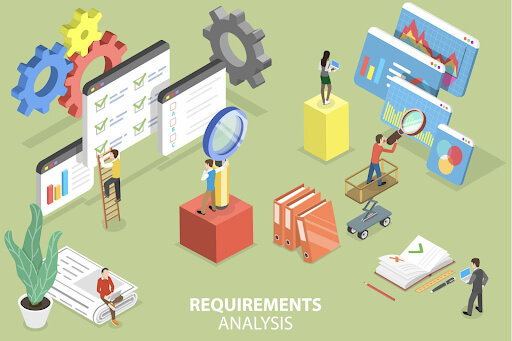 1-800-805-5783
1-800-805-5783 
People often confuse “product engineering” and “product development.” Undoubtedly, these two concepts are closely related, but they differ in several fundamental ways. Product development is a broader term that includes every step of product creation, from visualization to the final project. Product engineering also lies under the umbrella of product development, but it is a bit more specific.
Product engineering focuses explicitly on designing, developing, and optimizing the product’s technical aspects, ensuring it meets performance standards, regulatory requirements, and customer expectations. At the same time, product development encompasses a broader array of activities, including market research, creativity, testing, and marketing; product engineering zooms in on the technical intricacies of bringing a product from concept to reality.
You might ask why it is vital to understand the key differences between product engineering and product development. Knowing what product engineers exactly do can open new opportunities for collaboration between the engineers and businesses that hire them. This collaboration can help developers and engineers design a more impactful and user-friendly product.
If you’re planning to pursue your career in mechanical engineering or your company plans to develop a new product, understanding the difference between product engineering and product development can benefit you in numerous ways. Please scroll down to explore the similarities and differences between these two more comprehensive concepts.

What is Product Engineering: An Overview
Product engineering is an essential aspect of product development. This concept typically starts after thorough market research and visualization. Product engineers consider the practical factors of prototypes and designs, such as safety, functionality, ergonomics, mechanics, and structure.
Product engineering ensures a product is perfectly designed while meeting all safety measures. Mechanical (product) engineers design, create a prototype, and test a product to go beyond and above the customers’ aspirations and expectations.
Fundamental Elements of Product Engineering
Product engineering entails the following critical aspects:
Creating a unique concept for product design is an essential element of product engineering. Mechanical engineers use marketability feedback, user feedback, and end-user surveys to develop a robust design concept. Sometimes, they also create different product design concepts and prototypes to help identify the right product design for the target audience.
Product engineers are also responsible for analyzing the reliability and suitability of the materials. They use their experience and in-depth understanding of prototype materials to determine which type of product would be an excellent fit for the selected product. This process involves numerous factors, such as product functionality, cost, and aesthetic appeal.
Once design concept prototypes are developed, mechanical engineers test them to fix any bugs or flaws in their design. They often use different prototypes to access the customers’ trial feedback. This data helps product engineers determine which product model is more popular among the target audience.
Ensuring the user-friendly features of a product is one of the main aspects of product engineering. After completing the safety and structure testing of the prototype, engineers use customers’ trial feedback to adjust the design accordingly.
What is Product Development: An Overview
Product development begins with discovering a new concept to launch as a product. It includes step-by-step planning to eliminate imperiling resources. Product development, like product engineers, also aims to develop products according to customer requirements. Effective product development can increase the company’s market share. Companies conduct deep market research to know about their customer base.
Fundamental Elements of Product Development
A product development process includes the following stages:
Larger companies and organizations have an ideation team that develops and screens new product development ideas. After conceptualization, companies strive to transform it into a concept. They create different alternative products and compare them. This approach helps businesses determine whether their selected ideas meet customers’ needs.
This stage involves analyzing the sales, profits, and risks associated with the product. It helps companies identify if the product is commercially feasible. For business analysis, professionals conduct market surveys and check the sales history of similar products. They recognize the potential risks associated with the product, which can help reduce developmental problems in the future.
The next step is converting the concept into a tangible product. During product development, the marketing team develops different marketing strategies to distribute the product, and the finance team calculates its expenses.
Once a product is developed, the company launches its prototype to obtain customer feedback. It helps officials test their marketing strategies and product suitability. Developers use this customer data to make the required enhancements and changes in the product.
If a product passes through test marketing, the company uses effective marketing strategies to advertise it. This stage includes the identification of the target audience and the preparation of product launch strategies.

Product Engineering Vs. Product Development
| Product Engineering | Product Development |
| Product engineering entails designing, developing, and testing product features. | Product development is a complete procedure from conceptualization to the final product. |
| It aims to create better products than prototypes, depending on customer feedback. | It considers the right target audience to add new features to the product and increase brand awareness. |
| Product engineers use creative thinking to make added features more accessible and impactful. | Product developers introduce new product features to increase customer engagement. |
Job Duties of Product Developers
Product developers must be proficient in strategic thinking, data collection, and analysis because they have to perform duties in these disciplines. The job duties of a product engineer may include the following:
Job Duties of Product Engineers
A product engineer must have expertise in mathematics and prototype development. The job duties of product engineers may include:
A product engineer focuses on the technical aspects of product design and implementation, ensuring functionality and feasibility. On the other hand, a product developer is involved in the entire product creation lifecycle, from ideation to launch, encompassing market research, design, testing, and production.
Product engineering involves:
Product development, on the other hand, is a broader process that includes market research, conceptualization, design, testing, and production to create new products or improve existing ones.
Product engineering applies engineering principles to develop and optimize products for market release. Research and Development (R&D), however, encompasses a broader scope, including scientific research to discover new technologies or concepts and the development of those discoveries into tangible products or processes. While product engineering focuses on implementation and optimization, R&D involves exploration, experimentation, and innovation.
Conclusion
Product engineering and product development are critical to each other, but they differ in several ways. Product development is a step-by-step procedure for developing an impactful product, whereas product engineering is a specific aspect of product development. Both concepts aim to build a product that can meet customers’ expectations.